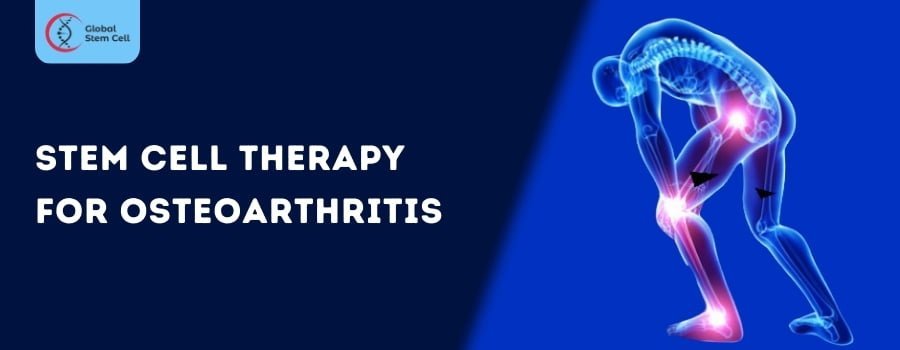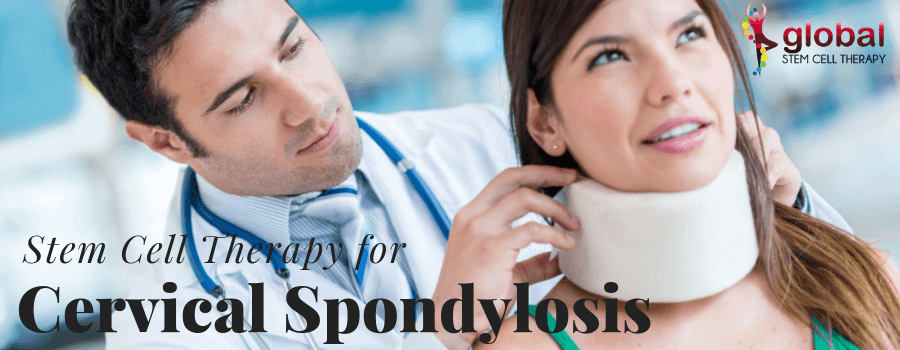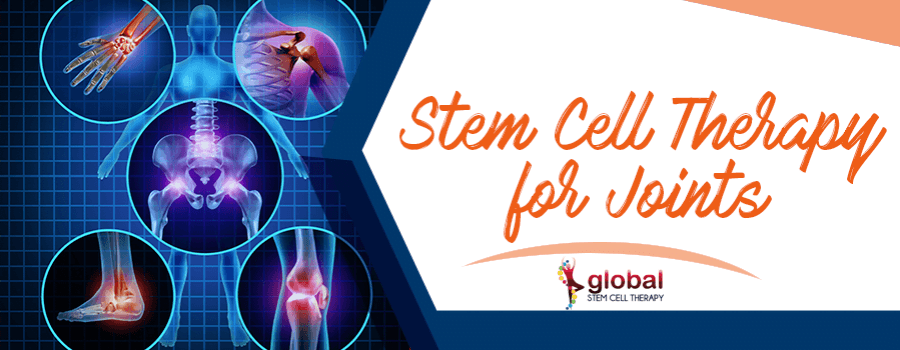
The Promise of Stem Cell Therapy for Osteoarthritis
Table of Content
In the realm of medical breakthroughs, one topic that has been generating significant buzz and fostering hope is Stem Cell Therapy for Osteoarthritis. Osteoarthritis, a degenerative joint condition affecting millions worldwide, has long been a formidable adversary in the realm of musculoskeletal health. Traditional treatments often focus on managing symptoms rather than providing a cure, leaving patients grappling with pain and limited mobility.
Enter stem cell therapy – a cutting-edge approach that holds the potential to revolutionize osteoarthritis treatment by addressing the root cause rather than merely alleviating symptoms. This groundbreaking technique harnesses the body’s natural ability to heal and regenerate, offering a beacon of hope to those who have faced the daunting prospect of a life marked by chronic joint pain.
In this article, we will delve into the fascinating world of stem cell therapy for osteoarthritis, exploring its mechanisms, potential benefits, and the current state of research. Join us on a journey to understand how this innovative therapy is paving the way for a future where osteoarthritis may no longer dictate the quality of life for countless individuals.
Understanding Osteoarthritis
Osteoarthritis (OA) is a common degenerative joint disease that primarily affects the articular cartilage, which is the protective tissue covering the ends of bones in a joint. It is the most prevalent form of arthritis and is often associated with aging, although it can also result from joint injury or other underlying conditions. Here’s a comprehensive overview of osteoarthritis:
Causes and Risk Factors
- Age: Osteoarthritis is more common in older adults, as the wear and tear on joints increase with age.
- Joint Injury: Trauma or injury to a joint can contribute to the development of osteoarthritis.
- Genetics: There is evidence that genetics may play a role in the development of osteoarthritis, and a family history of the condition may increase the risk.
- Obesity: Excess body weight places added stress on weight-bearing joints, such as the knees and hips, contributing to the development and progression of osteoarthritis.
- Gender: Osteoarthritis is more common in women, especially after menopause.
Pathophysiology
- Cartilage Degeneration: The hallmark of osteoarthritis is the gradual breakdown of articular cartilage, leading to decreased joint space and increased friction between bones.
- Bone Changes: As the cartilage wears away, the underlying bone may undergo changes, including the formation of osteophytes (bone spurs).
- Synovial Inflammation: The synovium, the lining of the joint, may become inflamed, leading to pain and swelling.
- Joint Space Narrowing: Progressive cartilage loss results in a reduction of the joint space, causing bones to come into closer contact, leading to pain and stiffness.
Symptoms
- Pain: Pain is a common symptom, especially during or after movement.
- Stiffness: Joint stiffness, particularly after periods of inactivity or rest.
- Swelling: Inflammation of the joint can lead to swelling.
- Reduced Range of Motion: Gradual loss of flexibility and joint mobility.
- Joint Crepitus: The sensation of grating or grinding within the joint during movement.
Different Type of Osteoarthritis
Osteoarthritis (OA) is a degenerative joint disease that primarily affects the cartilage in joints. While the underlying process is the same, OA can manifest in different ways depending on the joints involved. Here are some types of osteoarthritis based on the affected joints:
Hip Osteoarthritis: This occurs when the cartilage in the hip joint wears away over time, leading to pain, stiffness, and reduced range of motion in the hip. It is common in older adults but can also be caused by injury or structural abnormalities.
Knee Osteoarthritis: One of the most prevalent forms of OA, knee osteoarthritis affects the knee joint. It can result in pain, swelling, and difficulty in bending the knee. Risk factors include age, obesity, joint injuries, and genetic factors.
Hand Osteoarthritis: This type of OA affects the joints of the fingers and thumb. It can cause pain, stiffness, and swelling, making it challenging to perform fine motor tasks. Hereditary factors and joint overuse can contribute to hand osteoarthritis.
Spinal Osteoarthritis (Spondylosis): Osteoarthritis can also affect the spine, particularly the facet joints between vertebrae. This can lead to stiffness and pain in the neck or lower back. In severe cases, it may result in spinal stenosis, where the spinal canal narrows and puts pressure on the spinal cord and nerves.
Foot and Ankle Osteoarthritis: Joints in the feet and ankles can also be affected, causing pain and difficulty in walking. This can be associated with conditions like bunions or flat feet.
Shoulder Osteoarthritis: While less common than OA in the hips and knees, shoulder osteoarthritis can occur, causing pain and limiting the range of motion in the shoulder joint.
What is Stem Cell Therapy?
Stem cell therapy is a cutting-edge medical treatment that harnesses the regenerative potential of stem cells to repair, replace, or restore damaged or diseased cells, tissues, or organs in the body. Stem cells are unique cells with the remarkable ability to develop into various specialized cell types and to replicate themselves through cell division. This property, known as self-renewal and pluripotency, enables stem cells to differentiate into specific cell types with distinct functions, such as muscle cells, nerve cells, or cartilage cells.
Stem cell therapy involves the isolation, extraction, and manipulation of stem cells from various sources, including embryos, umbilical cord blood, bone marrow, adipose tissue (fat), and other adult tissues. These stem cells are then deployed to target areas of injury, disease, or degeneration, where they can integrate and differentiate into the specific cell types needed for tissue repair or regeneration.
There are several types of stem cell therapy, including:
- Embryonic stem cell therapy: Utilizes stem cells derived from early-stage embryos for their pluripotent properties, which allow them to develop into any cell type in the body.
- Adult stem cell therapy: Relies on stem cells obtained from adult tissues such as bone marrow, adipose tissue, or peripheral blood. These stem cells are typically multipotent or tissue-specific, meaning they have the ability to differentiate into a limited range of cell types.
- Induced pluripotent stem cell (iPSC) therapy: Involves reprogramming adult cells, such as skin cells, to revert to a pluripotent state similar to embryonic stem cells. iPSCs offer the potential for patient-specific treatments without the ethical concerns associated with embryonic stem cells.
Stem Cell Therapy for Osteoarthritis Cost
The cost of stem cell therapy for osteoarthritis can vary widely depending on several factors, including the location of the treatment, the specific clinic or hospital, the type of stem cells used, the number of injections or treatment sessions required, and whether the procedure is covered by insurance.
Below is a generalized cost table that provides a rough estimate of the expenses associated with stem cell therapy for osteoarthritis. Keep in mind that these figures are approximate and can vary significantly.
| Location | Cost Range (USD) |
|---|---|
| United States | $5,000 – $50,000 |
| Europe | $4,000 – $20,000 |
| Asia (e.g., India, Thailand) | $1,500 – $10,000 |
| Latin America (e.g., Mexico) | $2,000 – $15,000 |
Factors Influencing Cost
- Type of Stem Cells: Autologous (from the patient’s own body) vs. allogeneic (from a donor) can affect cost.
- Treatment Protocol: Number of injections and whether additional treatments (e.g., PRP therapy) are combined with stem cell therapy.
- Facility: Private clinics may charge more than public hospitals.
- Geographical Location: Costs can be higher in regions with higher living expenses.
Patient Success Story
FAQs about Stem Cell Therapy for Osteoarthritis
Certainly! Here are some frequently asked questions (FAQs) about stem cell therapy for osteoarthritis:
What is the best treatment for osteoarthritis?
The landscape of osteoarthritis (OA) treatment has evolved, and one of the most promising and innovative approaches is Stem Cell Therapy. Unlike traditional treatments that often focus on symptom management, Stem Cell Therapy aims to address the root cause of OA by promoting the regeneration of damaged tissues, particularly cartilage.
This therapy harnesses the regenerative potential of stem cells to initiate the natural healing process within the joints, offering a transformative and holistic approach to osteoarthritis treatment.
What is the best treatment for osteoarthritis in the knee?
For osteoarthritis specifically affecting the knee, Stem Cell Therapy emerges as a leading contender for the best treatment. The knee joint is particularly prone to wear and tear, leading to cartilage degeneration and subsequent pain and stiffness. Stem Cell Therapy for knee osteoarthritis involves injecting stem cells into the affected joint, promoting cartilage repair and regeneration.
This minimally invasive procedure offers the potential to not only manage symptoms but also halt or reverse the progression of the disease, providing patients with long-lasting relief and improved joint function.
What is the best treatment for osteoarthritis in the shoulder?
Stem Cell Therapy also holds significant promise as a treatment for osteoarthritis in the shoulder. The shoulder joint is susceptible to osteoarthritis, leading to pain and limited range of motion. Traditional treatments may provide temporary relief, but Stem Cell Therapy offers a unique approach by addressing the underlying cause.
By introducing stem cells to the damaged shoulder joint, the therapy aims to stimulate tissue regeneration, reduce inflammation, and enhance overall joint function. This personalized and regenerative approach positions Stem Cell Therapy as a forefront treatment option for shoulder osteoarthritis.
What is the best treatment for osteoarthritis in fingers?
Osteoarthritis in the fingers can significantly impact dexterity and quality of life. While traditional treatments like pain medications and physical therapy are commonly used, Stem Cell Therapy presents a novel and promising alternative.
By injecting stem cells into the affected finger joints, this therapy seeks to promote the regeneration of cartilage and alleviate pain. The minimally invasive nature of the procedure, coupled with the potential for long-lasting benefits, makes Stem Cell Therapy an attractive option for those seeking effective and innovative treatments for osteoarthritis in the fingers.
How do stem cells work in treating osteoarthritis?
Stem cells have the ability to differentiate into various cell types, including those found in joints. When injected into the damaged joint, they can potentially transform into cartilage cells, reducing inflammation and promoting tissue repair.
Is stem cell therapy effective for osteoarthritis?
The effectiveness of stem cell therapy for osteoarthritis is still a subject of ongoing research. While some studies show promising results in terms of pain reduction and improved function, more research is needed to establish its long-term efficacy.
How long does it take to see results from stem cell therapy?
The timeline for experiencing results can vary among individuals. Some patients report improvement within a few weeks, while others may take several months. Additionally, the extent of improvement may differ.
Can stem cell therapy completely cure osteoarthritis?
While stem cell therapy may provide relief from symptoms and slow down the progression of osteoarthritis, it is not considered a cure. The goal is often to improve joint function, reduce pain, and enhance the overall quality of life.
Considering stem cell therapy for osteoarthritis? Consult with your healthcare provider to explore personalized options for relief and potential improvement in joint function. Make informed decisions about your health today.





